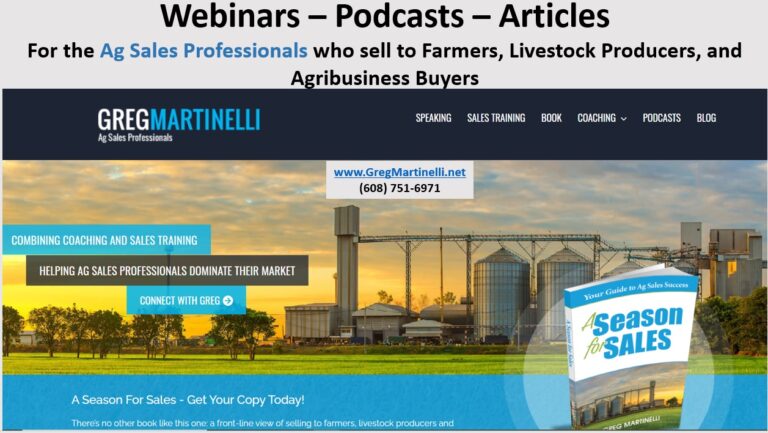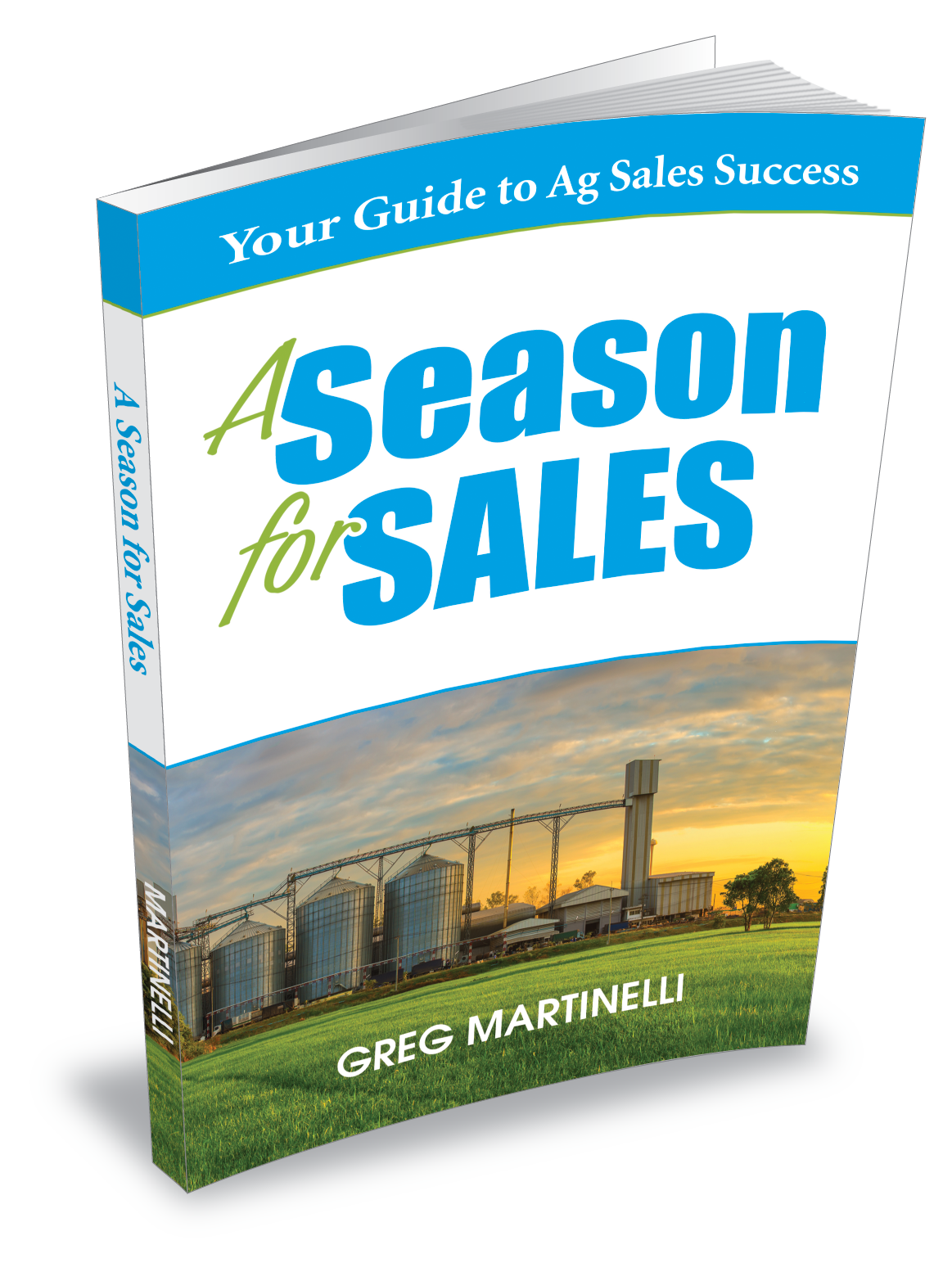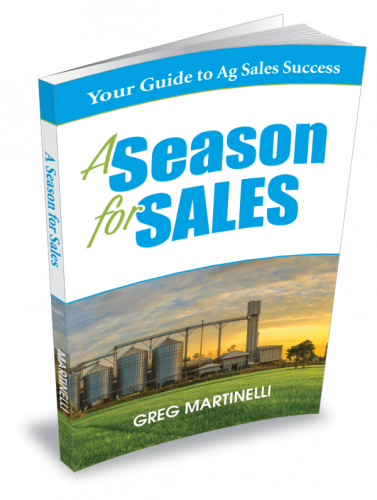Go from Monologue to Dialogue
4 Ways to increase customer engagement on your sales calls
Ask any salesperson what they do, and they will most likely tell you, “I sell for XYZ Agribusiness”. Then you ask, “How do you do that?” Again, most salespeople will respond, “I go out to see farmers or agribusinesses and tell them all about the great products at XYZ Agribusiness.”
Sounds pretty basic on the surface. And, that’s just what we do when we set out on our sales calls. We drive the country, telling customers about our great products. We make some small talk, and then begin our monologue about our products. Occasionally, we might check in on their understanding by asking, “Can you see how much value this product has?” The customer certainly doesn’t want to go back and have the monologue repeated to him, so he nods that he understands. Great, this customer is getting all the information I am laying out for them. So, we keep going and going and going with our monologue.
Look at the similarity to the late-night shows like “The Tonight Show with Jimmy Fallon”. Which is more interesting and engaging, his opening monologue or when he brings out a guest like Warren Buffet? I agree, the monologues are kind of funny. But most of us know it’s a series of one-liners written by a pool of writers. It’s one political or celebrity joke after another. Wow, another Trump or Kardashian joke, what a surprise! Then, Warren Buffet, the guest for the show comes on and the more engaging conversation occurs. We want to know what will Warren say? How will Warren react to Jimmy’s questions? What’s new and exciting in Warren’s life? These are the interesting and engaging parts of the show.
Your customer is no different. When you are presenting, it’s like listening to Jimmy give his monologue. Your customer is more interested in getting to the dialogue.
4 Ways to go from Monologue to Dialogue:
- Pre-call Plan: It starts in your pre-call plan when you develop a direction for the upcoming sales call. To turn monologue into dialogue, the number one tool is questions. Not just any questions, but questions that seek to understand the customer in the direction of your products. Without these questions, salespeople typically do one of two things. They either go back into monologue or engage in idle chit chat. Without a planned set of questions towards a meaningful discovery, we get nervous on sales calls. When we get nervous, we talk about things we know. I’ve watched countless farm visits with salespeople who didn’t prepare. They went on the call and “winged it”. Once on the call, the conversations stalled, the salesperson got nervous and reverted into a monologue about his products. Take some time to think through what you need to know from this customer and how you will get the customer to tell you.
- Prepared High Value Questions (HVQ): These are the most powerful tool on your sales tool belt. My definition of an HVQ is one that reveals a deep understanding of how this customer runs their business and makes decisions.
- Pose a Statement: The struggle to avoid monologue and stay in dialogue is made worse by our tight-lipped customers. They might be shy introverts. They might be having a bad day. Maybe they just had three other salespeople stop by the farm. They remain quiet, which makes us nervous. One way to open up an overly quiet customer is to pose a statement. Then silence. These might be controversial statements about your area of products. For example, you are a grain originator who goes farm to farm and buys grain into your elevator. One of the key factors in when a farmer sells their grain should be their break even. The break even is the cost it takes to grow a bushel of that grain. So, if it takes $3.50/bushel to grow corn, the producer obviously needs to know that number when he decides to sell. However, it’s a little sensitive to ask someone what their break even is. So, instead, you can pose a statement like, “Many producers in this area use $3.50 as their break even on corn. They are locking in some profit as the market is in the high 3’s right now.” Three obvious but important requirements: First, it has to be true. Don’t be out there making it up. Second, after you make the statement, Do Not Speak next! Let the statement sit. Third, if the producer asks for who uses $3.50 as a break even, you obviously are not allowed to say unless you have permission.
- Label their emotion: After a lifetime of being told that labeling a person is a bad thing, I’m here to tell you labeling their emotion can be a very powerful tool in sales. Just like any power tool, you have to be very careful how you use it. Use it too often and you sound like a psychiatrist. However, using it sparingly can really create a great discussion on a topic. For example, as you approach a producer you are calling on, you see that they seem frustrated. You ask the most common opening question, “Hey Bob, how’s it going?” Bob, then gives you a long list of problems he is dealing with: feed truck is late, precision Ag equipment has no signal, too much rain, not enough rain, too many salespeople bothering him, no money in farming, the DEF equipment is causing issues on his new tractor, etc. More recently, you heard a range of problems regarding retail shops closing their facility or going to appointments only due to Covid. When this happens, it’s best to let the anger die down before you jump into labeling it. You don’t want to interrupt his tirade. Let him calm a bit and then go back to one of the issues he mentioned, which falls into an area you can influence. In this example, you are selling feed. You can’t really influence DEF equipment, nor the amount of rain on Bob’s farm. However, he mentioned a late feed truck. The emotion to label is “concern”. Your approach, after Bob has calmed down, could be, “Bob, seems like late deliveries are a concern for you quite a bit these days.” Then, silence and let Bob respond.
There are other methods to engage your customers, but these four are the primary tools you can use. Practice them as you make your sales calls today. While most of us know we need to pre-call plan and ask good questions on our sales calls, the art of posing a statement or labeling an emotion takes time to learn.
Start today and let your customer enjoy the dialogue on your sales calls. Leave the dry monologues to your competition.
To receive this weekly blog and not miss out on sales insights, use the sign up form on the right side of this page.
If this article helped you on your journey to being more effective in your selling, I ask you to share it with those who might also benefit from it.
Take a look at the newest book on the market written specifically for you!
A Season for Sales: Your Guide to Ag Sales Success
The only book written specifically for the Ag Sales Professional, by an Ag Sales Professional!




